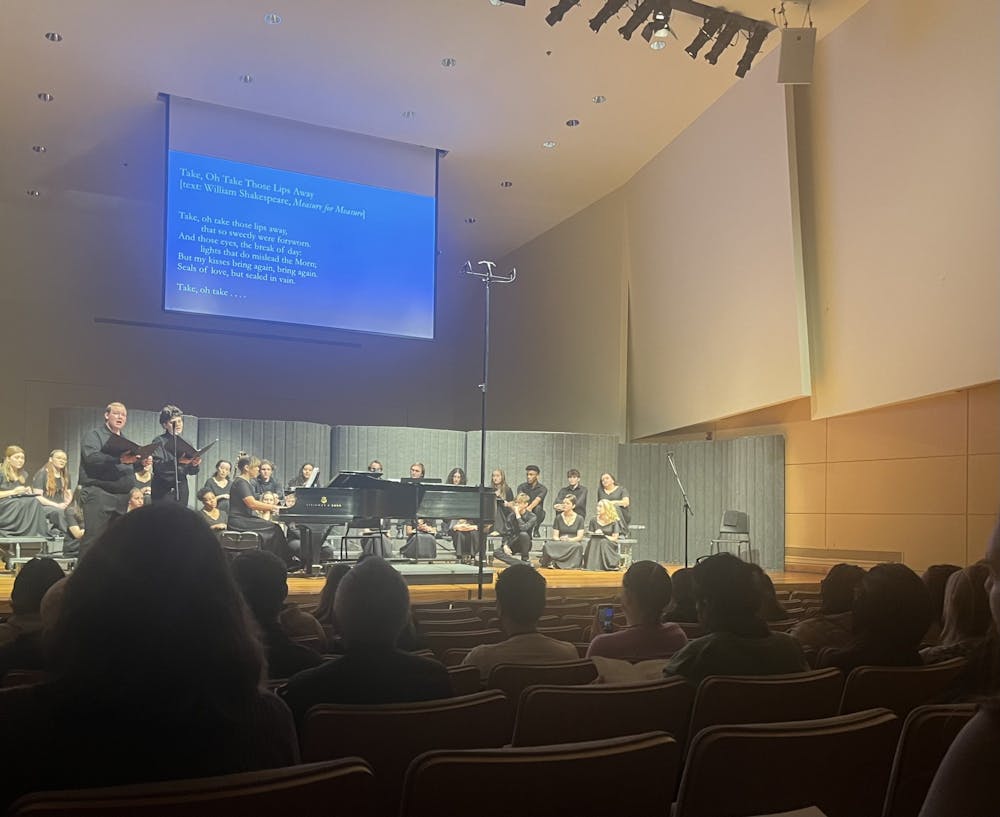Langston Hughes, Paul Laurence Dunbar and Maya Angelou may be familiar names. But “The Invisible Made Visible,” a program produced by the American University Chamber Singers, combined the work of these artists with the work of composers that were, for a long time, only heard amongst underrepresented communities, according to program organizers.
Two years ago, Callo LaBeau, a senior in the College of Arts Sciences, asked Daniel Abraham, the program’s director, if the choir could perform a concert featuring Black and female composers.
“I'm very excited that we have the opportunity to do this and bring this music to a wider audience,” LaBeau said.
The program included songs, poems and piano interludes. The choir has previously focused on social justice through song by featuring underrepresented artists of the past, according to Abraham. However, Abraham decided to wait until the choir went back to in person performances to organize “The Invisible Made Visible.” He wanted to do it right, according to LaBeau.
Still, LaBeau never thought the AU’s Antiracist Policy & Research Center would also be involved in the program. But Sara Clarke Kaplan, the executive director of AU’s Antiracist Research & Policy Center, provided commentary throughout the concert, giving context so the audience could process the pieces from a new perspective.
“There’s a rougher and deeper freedom and justice enshrined in the words you hear,” Kaplan said during the program. “We can always hear and see them if we are willing to open our ears."
Abraham included unique pieces, such as those of Emma Lou Diemer. Abraham first found Diemer’s work in a drawer behind classical pieces by artists such as Johan Sebastian Bach while he was working at a Unitarian church. The program opened with her never-recorded piece, “Caprice.”
“Diemer is local and I knew her music is in our library and I was excited to think about how to program her,” Abraham said. “I wanted to do something that people didn't know.”
Before the chamber sang “I Dream a World” by Langston Hughes, the audience learned from Kaplan’s commentary that the piece inspired Martin Luther King's “I Have a Dream” speech. Presenting the poem through song allows for the audience to decipher new meanings, according to Kaplan.
Chamber singers hummed at the start of a piece titled “Bar xiza” by Abbie Betinis. As the piece progressed, more soloists broke out in song. The progression of vocals was meant to show “confinement to freedom” to bring awareness to acts of violence against Muslim women. Each soloist marks “another voice [that] is free,” according to Abraham.
“I've searched for a larger compositional gesture that can paint what I'm starting to envision whole crowds of people through the centuries rising up, whether that be from religion, social justice, or personally feeling, all longing for something better,” Abraham said during the program.
CAS junior, Benjamin Card, said the program was completely transformed when they added Kaplan’s commentary during their dress rehearsal. Knowing the piece’s background outside the front page of the songbook made the music more powerful, according to Card.
“Some of the pieces definitely, especially when singing in it, you get the physical goosebump reaction,” Card said.




